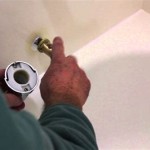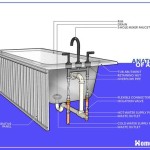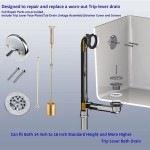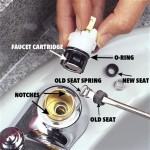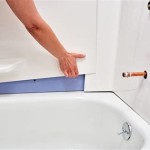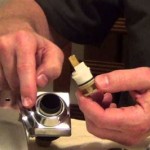What Is A Walk-In Bathtub?
A walk-in bathtub is a specialized type of bathtub designed to provide a safer and more accessible bathing experience, particularly for individuals with mobility limitations, seniors, and those with disabilities. Unlike traditional bathtubs that require stepping over a high threshold, walk-in bathtubs feature a watertight door that allows users to enter and exit the tub without having to navigate a significant barrier. This design minimizes the risk of slips and falls, making bathing safer and more comfortable.
The core functionality of a walk-in bathtub revolves around this low-entry threshold and the watertight door. Users open the door, step into the tub, close and securely latch the door, and then begin filling the tub with water. Once bathing is complete, the water is drained, and the door can be opened for exiting. This sequence contrasts sharply with traditional bathtubs, where users must step over the side before and after bathing, presenting a potential hazard.
While safety and accessibility are the primary drivers behind walk-in bathtub design, many models also incorporate additional features to enhance the bathing experience. These features can include built-in seating, hydrotherapy jets, air jets, grab bars, and temperature control systems. The combination of safety features and luxurious amenities makes walk-in bathtubs a valuable addition to homes seeking to accommodate a diverse range of needs and preferences.
Key Features of Walk-In Bathtubs
Several key features distinguish walk-in bathtubs from standard bathtubs and contribute to their enhanced safety and accessibility. Understanding these features is crucial for evaluating the suitability of a walk-in bathtub for specific individual needs.
Watertight Door and Low-Entry Threshold: The most defining characteristic of a walk-in bathtub is its watertight door. This door is designed to create a secure seal when closed, preventing water from leaking out of the tub. The door is typically constructed from durable materials such as acrylic or fiberglass and features a robust locking mechanism to ensure a tight seal. The low-entry threshold, often just a few inches high, minimizes the need for significant stepping, making it easier and safer to enter and exit the tub. The door's location can vary depending on the model, with some tubs featuring inward-swinging doors and others having outward-swinging doors. Considerations regarding bathroom space and user mobility should influence the choice of door swing direction.
Built-in Seating: Many walk-in bathtubs incorporate a built-in seat, allowing users to bathe in a seated position. This is particularly beneficial for individuals who have difficulty standing for extended periods. The seat height is typically designed to be comfortable and supportive, promoting proper posture and reducing strain on the back and joints. The seat's material is often non-slip to enhance safety and prevent accidental slips. The presence of built-in seating also reduces the overall water volume required to fill the tub, as the user's body displaces less water when seated.
Grab Bars: Strategically placed grab bars are another essential safety feature commonly found in walk-in bathtubs. These bars provide support and stability, allowing users to maintain their balance while entering, exiting, and maneuvering within the tub. The placement of grab bars is typically optimized to provide assistance at key points, such as near the door, along the side of the tub, and near the faucet controls. Grab bars are typically constructed from durable materials such as stainless steel and feature a textured surface to enhance grip.
Types of Walk-In Bathtubs
Walk-in bathtubs are available in a variety of styles and configurations to meet diverse needs and preferences. Understanding the different types of walk-in bathtubs is essential for selecting the model that best suits individual requirements and bathroom layout constraints.
Standard Walk-In Tubs: These are the most common type of walk-in bathtub. They typically feature a rectangular or oval shape and are designed to fit into the space occupied by a standard bathtub. Standard walk-in tubs offer a balance of safety, comfort, and affordability, making them a popular choice for many homeowners. They usually include the basic features of a walk-in tub, such as a low-entry threshold, watertight door, and built-in seating. Options such as hydrotherapy jets and other luxury features can frequently be added depending on the model.
Bariatric Walk-In Tubs: Designed for individuals with larger body sizes, bariatric walk-in bathtubs are wider and deeper than standard models. These tubs provide ample space and support for individuals who may find standard-sized tubs uncomfortable or restrictive. Bariatric walk-in tubs are typically constructed from reinforced materials to ensure durability and weight capacity. The door opening is also wider to accommodate larger individuals. Due to their larger size, these tubs may require modifications to the bathroom layout.
Walk-In Tubs with Hydrotherapy: These walk-in bathtubs incorporate hydrotherapy jets that massage the body with pulsating water. Hydrotherapy can help to relieve muscle tension, improve circulation, and reduce pain and stiffness. The jets are typically strategically positioned to target specific areas of the body, such as the back, legs, and feet. The intensity and direction of the jets can usually be adjusted to customize the massage experience. Hydrotherapy walk-in tubs can significantly enhance the therapeutic benefits of bathing.
Walk-In Tubs with Air Jets: Similar to hydrotherapy tubs, walk-in bathtubs with air jets use jets to create a massaging effect. However, instead of water, these jets release streams of air bubbles into the water. Air jets provide a gentler massage than hydrotherapy jets and can help to exfoliate the skin and improve lymphatic drainage. Air jets are often positioned along the bottom and sides of the tub to create a full-body massage experience. The addition of air jets can transform a simple bath into a spa-like experience.
Walk-In Tub-Shower Combos: These units combine the features of a walk-in bathtub and a shower. They typically include a showerhead and a shower enclosure or curtain. Walk-in tub-shower combos offer versatility and convenience, allowing users to choose between taking a bath or a shower. They are a good option for individuals who prefer both bathing and showering but have limited bathroom space. The shower enclosure or curtain helps to prevent water from splashing outside the tub.
Benefits of Using Walk-In Bathtubs
The advantages of walk-in bathtubs extend beyond mere convenience, impacting overall safety, health, and independence, especially for individuals facing mobility challenges.
Enhanced Safety: The primary benefit of a walk-in bathtub is enhanced safety. The low-entry threshold and watertight door significantly reduce the risk of slips and falls, which are a leading cause of injury among seniors. The built-in seating and grab bars provide additional support and stability, making it easier and safer to enter, exit, and maneuver within the tub. The reduction in fall risk contributes to a greater sense of security and independence during bathing.
Increased Independence: By minimizing the physical exertion required for bathing, walk-in bathtubs can help individuals maintain their independence and dignity. The ability to bathe safely and comfortably without assistance can significantly improve quality of life and reduce the need for reliance on caregivers. This increased independence can have a positive impact on self-esteem and overall well-being.
Therapeutic Benefits: Many walk-in bathtubs offer therapeutic benefits beyond basic hygiene. Hydrotherapy jets can help to relieve muscle tension, improve circulation, and reduce pain and stiffness. Air jets provide a gentle massage that can exfoliate the skin and improve lymphatic drainage. Soaking in warm water can also help to reduce stress and promote relaxation. These therapeutic benefits can contribute to improved physical and mental health.
Improved Hygiene: Walk-in bathtubs make it easier for individuals with mobility limitations to maintain proper hygiene. The low-entry threshold and built-in seating allow for a more thorough and comfortable bathing experience. This can be particularly important for individuals who have difficulty reaching certain areas of their body. Improved hygiene can contribute to better overall health and prevent skin infections.
Home Value Enhancement: While primarily focused on safety and accessibility, installing a walk-in bathtub can also increase the value of a home. As the population ages, the demand for accessible home features is growing. A walk-in bathtub can make a home more attractive to potential buyers, particularly seniors and individuals with disabilities. This increased home value can be a significant long-term benefit.

Walk In Bathtub What Are The Major Pros And Cons

How Do You Get Out Of A Walk In Bathtub Ez Mobility Solutions

Walk In Bathtubs Simplicity Bath

Two Seat Outward Swing Door Walk In Bathtub Little Rock Bath Makeover Of Arkansas

Na 47 Inch Walk In Tub Quick Fill Whirlpool Bath Boundless
.jpg?strip=all)
ᐈ Aquatica Baby Boomer 2 Freestanding Solid Surface Walk In Bathtub Buy Best S

How Does A Walk In Bath Work Premier Care Bathing

The Pros And Cons Of Walk In Tubs For Seniors

Does The Size Of Your Walk In Tub Matter Kohler Bath

Best Walk In Tub Features For Seniors Kohler Bath

